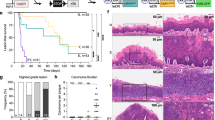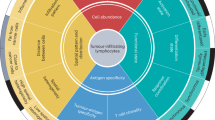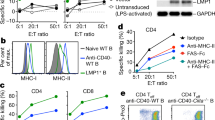Abstract
TUMOUR promoters are compounds which are not carcinogens but which can induce tumours in mice treated with a subcarcinogenic dose of a chemical carcinogen1,2. The mechanism of action of tumour promoters in vivo is unknown, although recent reports suggest that they may inhibit terminal differentiation of certain cells in vitro. Myogenesis of chick embryo myoblasts3, spontaneous and induced erythroid differentiation of Friend virus-transformed proerythroid cells4,5 and lipogenesis in a clone of BALB/c 3T3 preadipocyte cells are examples of in vitro differentiation processes inhibited by tumour promoters. Unfortunately, inhibition of differentiation by tumour promoters has not yet been shown to occur in vivo. It is also uncertain whether the cells used in the above studies are representative of the actual target cells for tumour promoters in vivo. We report here that tumour promoters can induce as well as inhibit differentiation of virus-transformed proerythroid cells in vitro. Detection of the opposing effects depends on measuring tumour promoter action in more than one virus-transformed proerythroid cell line.
This is a preview of subscription content, access via your institution
Access options
Subscribe to this journal
Receive 51 print issues and online access
$199.00 per year
only $3.90 per issue
Buy this article
- Purchase on SpringerLink
- Instant access to full article PDF
Prices may be subject to local taxes which are calculated during checkout
Similar content being viewed by others
References
Van Duuren, B. L. Prog. exp. Tumour Res. 11, 31 (1969).
Hecker, E. Meth. Cancer Res. 6, 439 (1971).
Cohen, R., Pacifici, M., Rubinstein, N., Biehl, J. & Holtzer, H. Nature 266, 538 (1977).
Rovera, G., O'Briend, T. G. & Diamond, L. Proc. natn. Acad. Sci. U.S.A. 74, 2894 (1977).
Yamasaki, H. et al. Proc. natn. Acad. Sci. U.S.A. 74, 3451 (1977).
Diamond, L., O'Brien, T. G. & Rovera, G. Nature 269, 247 (1977).
Friend, C., Patuleia, M. C. & DeHarven, E. Natn. Cancer Inst. Monogr. 22, 505 (1966).
Scher, W., Preisler, H. D. & Friend, C. J. Cell Physiol. 81, 63 (1973).
Dawson, P. J. & Fieldsteel, A. H. J. natn. Cancer Inst. 52, 1805 (1974).
Friend, C., Scher, W. & Sato, T. Proc. natn. Acad. Sci. U.S.A. 68, 378 (1971).
Fieldsteel, A. H., Dawson, P. J., Becker, F. A., Kurahara, C. & Mitoma, C. Br. J. Cancer 35, 199 (1977).
Miao, R. & Fieldsteel, A. H. Proc. Soc. Exp. Med. Biol. (submitted).
Preisler, H. D. & Giladi, M. J. Cell Physiol. 85, 537 (1975).
Fibach, E., Reuben, R. C., Rifkind, R. A. & Marks, P. A. Cancer Res. 37, 440 (1977).
Miao, R., Fieldsteel, A. H. & Fodge, D. J. Cell Physiol. (submitted).
Author information
Authors and Affiliations
Rights and permissions
About this article
Cite this article
MIAO, R., FIELDSTEEL, A. & FODGE, D. Opposing effects of tumour promoters on erythroid differentiation. Nature 274, 271–272 (1978). https://doi.org/10.1038/274271a0
Received:
Accepted:
Published:
Issue date:
DOI: https://doi.org/10.1038/274271a0
This article is cited by
-
Potential role of Ca++ on the differentiation of erythroid progenitor cells
Archives of Pharmacal Research (1995)
-
Effects of n-Butyrate and phorbol ester (TPA) on induction of Epstein-Barr virus antigens and cell differentiation
Archives of Virology (1984)
-
Induction of supermelanin synthesis and morphological changes in interspecific reconstituted cells and its reversal by tumor promoter
Somatic Cell Genetics (1982)
-
Induction of differentiation in human promyelocytic leukemia cells by tumor promoters
Journal of Cancer Research and Clinical Oncology (1982)



